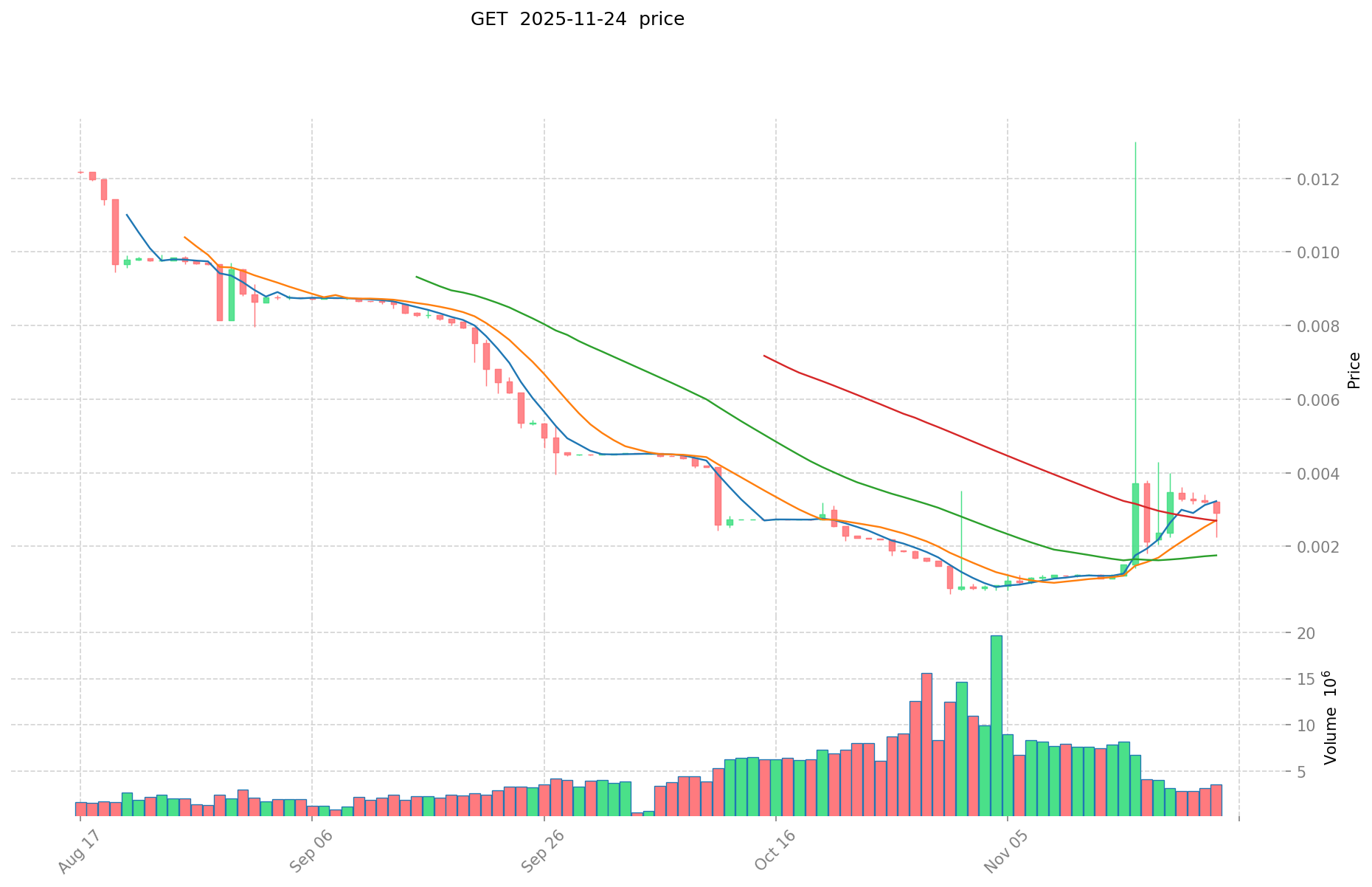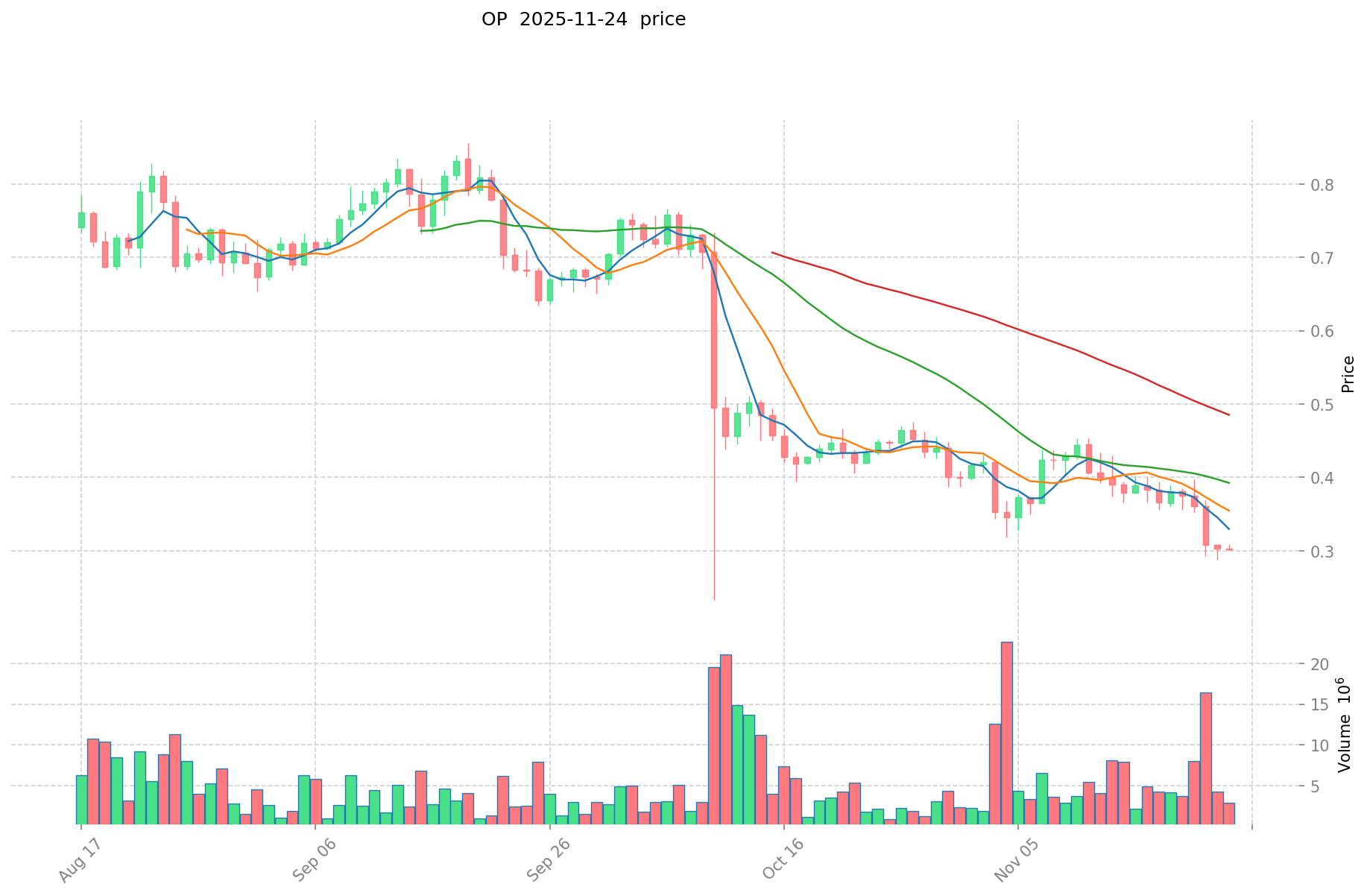GET vs OP: The Battle of HTTP Methods in Modern API Design
Introduction: GET vs OP Investment Comparison
In the cryptocurrency market, the comparison between Global Entertainment Token (GET) vs Optimism (OP) has always been a topic that investors can't avoid. The two not only have significant differences in market cap ranking, application scenarios, and price performance, but also represent different positioning of crypto assets.
Global Entertainment Token (GET): Launched on the Cardano chain, it aims to become a common currency for the global entertainment industry.
Optimism (OP): Since its inception, it has been hailed as a low-cost, lightning-fast Ethereum Layer 2 blockchain solution, addressing the practical needs of developers and users.
This article will comprehensively analyze the investment value comparison between GET and OP, focusing on historical price trends, supply mechanisms, institutional adoption, technological ecosystems, and future predictions, attempting to answer the question investors care about most:
"Which is the better buy right now?" Here is the report section based on the provided template and context:
I. Price History Comparison and Current Market Status
Global Entertainment Token (GET) and Optimism (OP) Historical Price Trends
- 2024: OP reached an all-time high of $4.84 on March 6, 2024, likely due to increased adoption of Layer 2 solutions.
- 2025: GET hit an all-time high of $0.0336 on May 14, 2025, possibly driven by growth in the entertainment token sector.
- Comparative analysis: In the recent market cycle, GET rose from a low of $0.000695 to a high of $0.0336, while OP declined from its peak of $4.84 to a low of $0.288846 on October 31, 2025.
Current Market Situation (2025-11-24)
- GET current price: $0.00333
- OP current price: $0.3096
- 24-hour trading volume: GET $11,079.75 vs OP $1,098,506.73
- Market Sentiment Index (Fear & Greed Index): 19 (Extreme Fear)
Click to view real-time prices:
- View GET current price Market Price
- View OP current price Market Price


Investment Analysis: OP (Optimism) Fundamental Value Assessment
II. Core Factors Influencing OP Investment Value
Supply Mechanism (Tokenomics)
- OP: Token distribution model with rewards for Layer 2 ecosystem development
- 📌 Historical pattern: Layer 2 token supply mechanisms typically drive value accumulation during periods of increased network adoption
Institutional Adoption and Market Applications
- Institutional holdings: Growing institutional interest in Layer 2 solutions
- Enterprise adoption: OP gaining traction in DeFi applications and ecosystem expansion
- Regulatory stance: Varying regulatory approaches to Layer 2 scaling solutions across jurisdictions
Technical Development and Ecosystem Building
- OP technical upgrades: Continuous improvements to the Optimism rollup technology
- Ecosystem comparison: Strong growth in TVL (Total Value Locked) metrics
- Network effects: Expanding developer community and application deployment
Macroeconomic Environment and Market Cycles
- Performance in inflationary environments: Layer 2 demand increases during high Ethereum gas fee periods
- Monetary policy impact: General crypto market sentiment affecting Layer 2 token valuations
- Cross-border transaction demand: Growing need for scalable, lower-cost blockchain solutions
III. 2025-2030 Price Prediction: GET vs OP
Short-term Prediction (2025)
- GET: Conservative $0.002613 - $0.003350 | Optimistic $0.003350 - $0.003819
- OP: Conservative $0.173376 - $0.3096 | Optimistic $0.3096 - $0.343656
Mid-term Prediction (2027)
- GET may enter a growth phase, with estimated prices $0.002104 - $0.003952
- OP may enter a bullish market, with estimated prices $0.229946 - $0.477856
- Key drivers: Institutional capital inflow, ETF, ecosystem development
Long-term Prediction (2030)
- GET: Base scenario $0.003774 - $0.004389 | Optimistic scenario $0.004389 - $0.005574
- OP: Base scenario $0.313734 - $0.482667 | Optimistic scenario $0.482667 - $0.526108
Disclaimer
GET:
| 年份 | 预测最高价 | 预测平均价格 | 预测最低价 | 涨跌幅 |
|---|---|---|---|---|
| 2025 | 0.003819684 | 0.0033506 | 0.002613468 | 0 |
| 2026 | 0.00380025052 | 0.003585142 | 0.0019718281 | 7 |
| 2027 | 0.0039511849982 | 0.00369269626 | 0.0021048368682 | 10 |
| 2028 | 0.004700986973793 | 0.0038219406291 | 0.003707282410227 | 14 |
| 2029 | 0.004517151629533 | 0.004261463801446 | 0.00238641972881 | 27 |
| 2030 | 0.005574420798672 | 0.004389307715489 | 0.003774804635321 | 31 |
OP:
| 年份 | 预测最高价 | 预测平均价格 | 预测最低价 | 涨跌幅 |
|---|---|---|---|---|
| 2025 | 0.343656 | 0.3096 | 0.173376 | 0 |
| 2026 | 0.3919536 | 0.326628 | 0.16984656 | 5 |
| 2027 | 0.477856764 | 0.3592908 | 0.229946112 | 16 |
| 2028 | 0.5232172275 | 0.418573782 | 0.2930016474 | 35 |
| 2029 | 0.4944402799875 | 0.47089550475 | 0.2684104377075 | 52 |
| 2030 | 0.526108002681937 | 0.48266789236875 | 0.313734130039687 | 55 |
IV. Investment Strategy Comparison: GET vs OP
Long-term vs Short-term Investment Strategies
- GET: Suitable for investors focusing on entertainment industry potential
- OP: Suitable for investors interested in Ethereum scaling solutions and DeFi growth
Risk Management and Asset Allocation
- Conservative investors: GET: 20% vs OP: 80%
- Aggressive investors: GET: 40% vs OP: 60%
- Hedging tools: Stablecoin allocation, options, cross-currency portfolios
V. Potential Risk Comparison
Market Risk
- GET: Limited market adoption in the entertainment sector
- OP: Dependence on Ethereum's success and Layer 2 competition
Technical Risk
- GET: Scalability on Cardano network, ecosystem development
- OP: Rollup technology stability, potential security vulnerabilities
Regulatory Risk
- Global regulatory policies may impact both tokens differently, with Layer 2 solutions potentially facing closer scrutiny
VI. Conclusion: Which Is the Better Buy?
📌 Investment Value Summary:
- GET advantages: Niche focus on entertainment industry, potential for growth in a specific sector
- OP advantages: Strong ecosystem growth, increasing adoption of Layer 2 solutions, backing by Ethereum community
✅ Investment Advice:
- New investors: Consider a small allocation to OP as part of a diversified crypto portfolio
- Experienced investors: Balance between GET and OP based on risk tolerance and belief in respective ecosystems
- Institutional investors: Focus on OP due to its larger market cap and established ecosystem
⚠️ Risk Warning: Cryptocurrency markets are highly volatile. This report does not constitute investment advice. None
VII. FAQ
Q1: What are the main differences between GET and OP tokens? A: GET is focused on the entertainment industry on the Cardano blockchain, while OP is an Ethereum Layer 2 scaling solution. OP has a larger market cap, higher trading volume, and a more established ecosystem.
Q2: Which token has shown better price performance recently? A: GET has shown better recent performance, rising from a low of $0.000695 to a high of $0.0336 in 2025. OP, on the other hand, declined from its peak of $4.84 in 2024 to $0.3096 as of November 24, 2025.
Q3: What are the key factors influencing the investment value of OP? A: Key factors include OP's token distribution model, growing institutional interest in Layer 2 solutions, continuous technical improvements, expanding developer community, and increasing demand for scalable blockchain solutions.
Q4: How do the long-term price predictions for GET and OP compare? A: By 2030, GET is predicted to reach $0.003774 - $0.005574, while OP is expected to reach $0.313734 - $0.526108 in the base to optimistic scenarios.
Q5: What are the main risks associated with investing in GET and OP? A: For GET, risks include limited market adoption and scalability issues. For OP, risks involve dependence on Ethereum's success, competition from other Layer 2 solutions, and potential security vulnerabilities in rollup technology.
Q6: How should investors allocate their portfolio between GET and OP? A: Conservative investors might consider 20% GET and 80% OP, while aggressive investors could opt for 40% GET and 60% OP. The exact allocation should be based on individual risk tolerance and belief in each ecosystem.
Q7: Which token might be more suitable for institutional investors? A: OP might be more suitable for institutional investors due to its larger market cap, more established ecosystem, and growing adoption of Layer 2 solutions in the Ethereum network.
Share
Content